
Wuyi Mountain. [Photo/Chinaculture.org]
East China's Fujian province is the starting point of the ancient Maritime Silk Road. Facing the sea, the province is known for its rolling hills, lush forests and scattered islands.
Fujian is home to several UNESCO world heritage sites such as Quanzhou, Gulangyu Island, Fujian Tulou and Wuyi Mountain. The province is also known for its rich culinary tradition, featuring light, delicate and fresh flavors.
Wuyi Mountain
Wuyi Mountain is a UNESCO natural and cultural heritage site in Nanping, Fujian province. It contains spectacular natural views and a series of exceptional archaeological sites.
The mountain is the cradle of Neo-Confucianism, a doctrine that played a dominant role in countries of Eastern and South-eastern Asia for many centuries and influenced philosophy over much of the world.
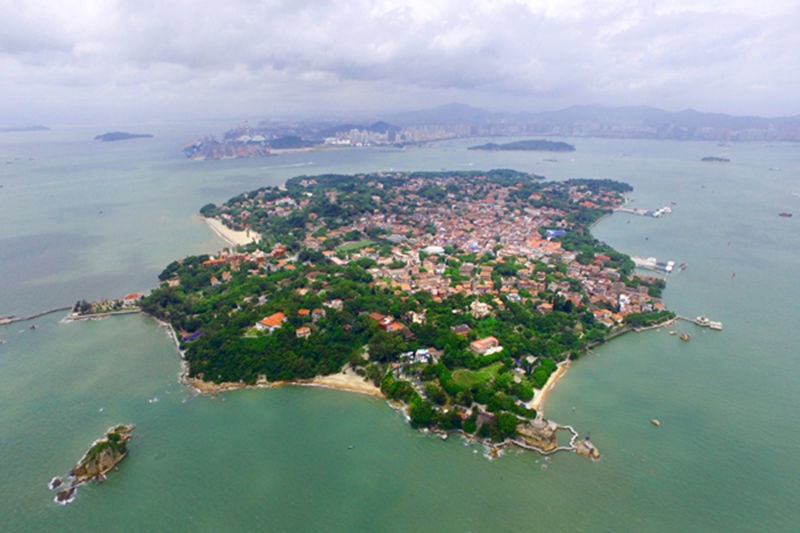
[Photo/Xinhua]
Gulangyu Island
Gulangyu Island, a UNESCO world heritage site, is located on the estuary of the Jiulong River, facing the city of Xiamen. Its heritage includes a settlement composed of 931 historical buildings, and represents a variety of local and international architectural styles, natural sceneries, historic roads and gardens. Gulangyu is an exceptional example of cultural fusion.
The island has witnessed clashes of culture and integration between the East and the West since Xiamen was opened to foreign trade in 1844. So far, many historical relics and representative natural scenic spots are still well-preserved on the island.

[Photo/Chinaculture.org]
Sanfang Qixiang (Three Lanes and Seven Allies)
Sanfang Qixiang, or Three Lanes and Seven Alleys, is a well-preserved historical and cultural tourist area in downtown Fuzhou. It is a must-visit destination renowned for its carefully restored ancient architecture and rich historical significance.
The origins of Sanfang Qixiang date back to the late Western Jin Dynasty (265-316). Its layout was established during the Tang Dynasty (618-907), and it flourished during the Ming and Qing dynasties (1368-1911). The district is known for its unique city layout, featuring three lanes to the west and seven alleys to the east, all branching from central Nanhou street.

During the Spring Festival holiday, the ancient buildings and blooming canola flowers in Liangcuo Historic and Cultural Block attracted many visitors, as seen on Feb 17, 2021. [Photo/Xinhua]
Liangcuo Historic and Cultural Block
Fuzhou's Liangcuo Historic and Cultural Block is a newly revitalized heritage area located in Cangshan district of Fuzhou. It combines the charm of an ancient village with modern cultural facilities. The core preservation zone covers about 4.3 hectares, featuring traditional houses and shops, showcasing architectural styles from the Tang (618-907), Yuan (1271-1368) and Qing (1644-1911) dynasties.
Liangcuo stands as both a living symbol of Fuzhou's rural and architectural heritage and a lively cultural spot where visitors can enjoy folk festivals, traditional crafts and a peaceful, garden-like atmosphere.
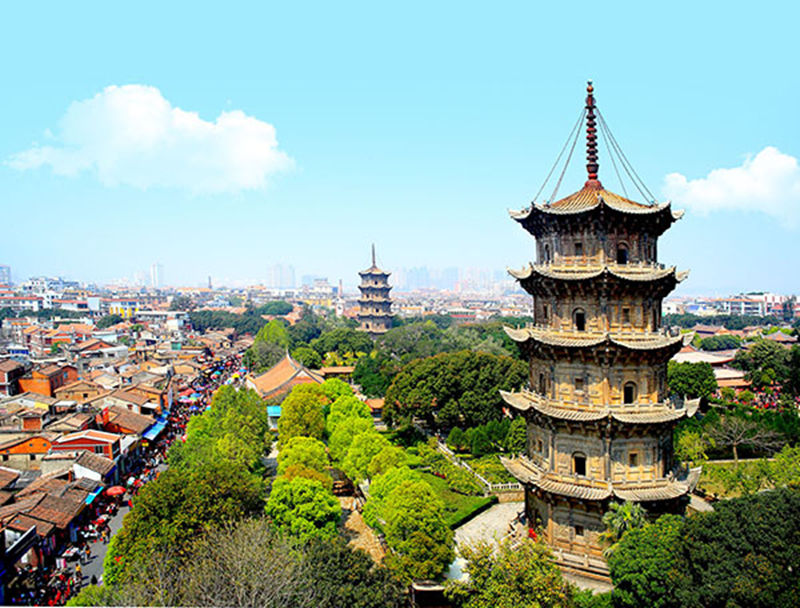
Kaiyuan Temple - the biggest ancient Buddhist temple in Fujian province. [Photo/Chinaculture.org]
Quanzhou: Emporium of the World in Song-Yuan China
"Quanzhou: Emporium of the World in Song-Yuan China" was inscribed onto the UNESCO World Heritage List in 2021. It includes 22 sites and monuments across Quanzhou, which jointly reflect a prosperous picture of maritime trade from the 10th to 14th centuries.
The 22 representative historic monuments and sites include administrative buildings and structures; facilities showing the city's structure, such as its gates, walls and roads; religious sites and statues that witnessed multicultural communities; cultural memorial sites and monuments; iron and ceramic production sites; and the city's transportation network formed by bridges, docks and pagodas that guided voyages.
Key sites in Quanzhou include Kaiyuan Temple - the biggest ancient Buddhist temple in Fujian province, Luoyang Bridge, and Qingjing Mosque - one of the oldest mosques in China.
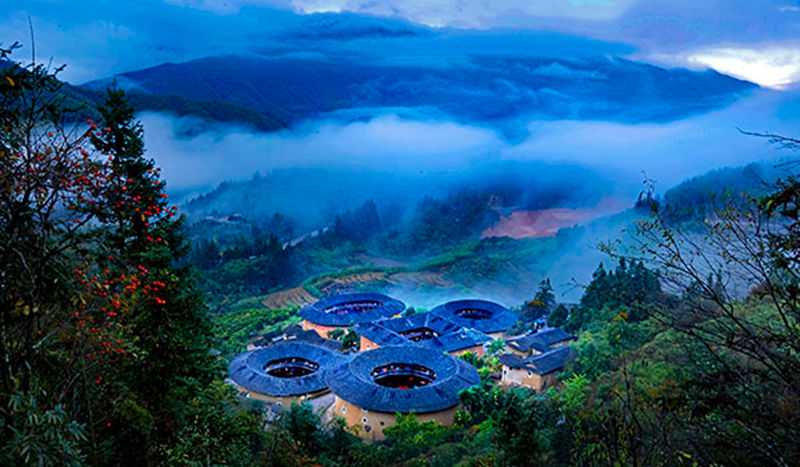
[Photo/Chinaculture.org]
Fujian Tulou
The Fujian "tulou", or earthen buildings, are widely scattered in Yongding and Nanjing counties. They are variously-sized circular and rectangular buildings mostly set among rice, tea and tobacco fields, and some can house up to 800 people.
Several stories high, the multifamily communal living structures were first designed for defense purposes. In 2008, the buildings became well-known after 46 of them, constructed between the 15th and 20th centuries, were inscribed on UNESCO's World Heritage List as a unique residential architecture of Fujian province.
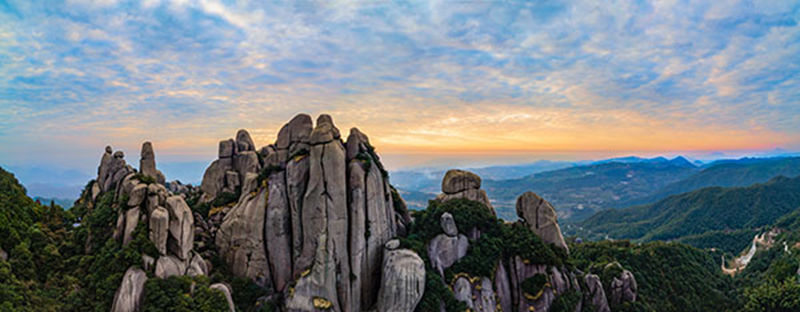
[Photo/Chinaculture.org]
Taimu Mountain
Taimu Mountain National Scenic Area in Ningde city has been famed as "the great landscape of mountains and seas".
Standing on the coast of the East China Sea, it is surrounded by the sea on three sides and backed by mountains on the fourth, presenting a majestic and awe-inspiring landscape. The area is renowned for its unique and varied rock formations, with bizarre stones and peaks creating a spectacular and distinctive type of scenery.

One of the country's largest statues of sage Lao Tzu sits at the Qingyuan Mountain. [Photo by Chen Yingjie For China Daily]
Qingyuan Mountain
Qingyuan Mountain is located in the northern part of Quanzhou, a city with a rich historical and cultural heritage. The mountain is celebrated for its scenic beauty and abundance of cultural landmarks, bearing witness to centuries of human activity.
Over the ages, continuous development has endowed Qingyuan Mountain with numerous cultural relics and historical sites. Among the best-preserved are seven stone carvings from the Song (960-1279) and Yuan (1271-1368) dynasties and over 600 cliffside inscriptions from different periods.

[Photo provided to chinadaily.com.cn]
FOOD
"Fotiaoqiang" (Buddha Jumps over the Wall)
Buddha Jumps over the Wall is one of the most typical cuisines in Fujian. It is made of 18 pricey ingredients, including shark's fin, abalone, sea cucumber, ginseng and scallops. All these are simmered together for long hours over slow fire, ensuring the essence has been extracted.
A legend tells that a Buddhist monk found the smell of the dish so irresistible that he jumped over the wall to ask for a share, and that is why the dish gets such a special name.
Litchi Pork
Litchi Pork refers to a kind of traditional Fujian cuisine made of water chestnut and pork in the shape of litchi. This dish is famous for its sweet and sour flavor.
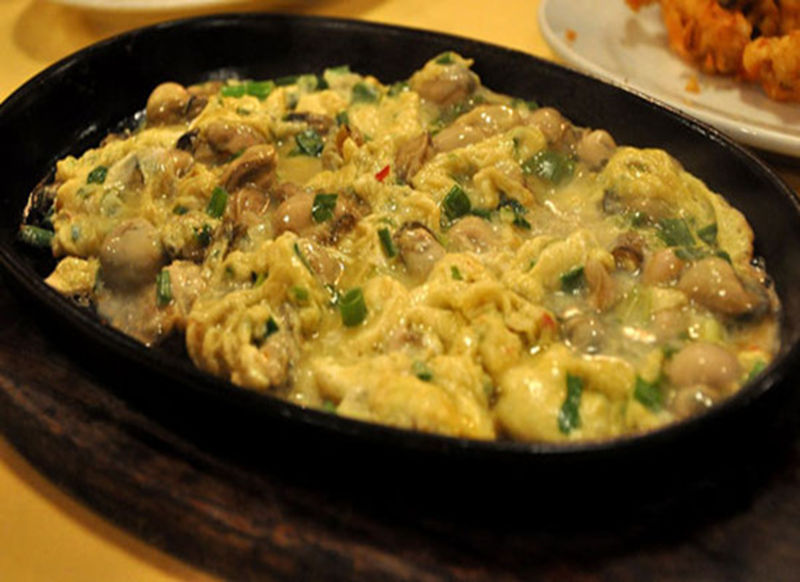
[Photo provided to chinadaily.com.cn]
Oyster Omelet
The oyster omelet is widely known for its savory taste. The dish consists of an omelette with a filling commonly made of small oysters, eggs and scallions, and a sauce poured on top of the omelet for added taste.
"Tusundong" (Sipunculid worm jelly)
The crisp "tusundong", a worm jelly, is known as a good source of nutrients including protein and amino acid. A local seafood rarely seen in China's inland areas, the treat is usually teamed with satay sauce and coriander.
Five-spice Meat Rolls
"Wuxiangjuan", or five-spice meat rolls, is popular not just in Fujian province but also in Thailand, the Philippines, Malaysia and Singapore. It's made from spiced meat, water chestnut and scallions wrapped in fried soybean.

Copyright © General Office of Fujian Provincial People's Government
Website Identification Code 3500000049Registration Number: 15003084
All rights reserved. The content (including but not limited to text, photo, multimedia information, etc) published in this site belongs to fujian.gov.cn.
Without written authorization from fujian.gov.cn, such content shall not be republished or used in any form.